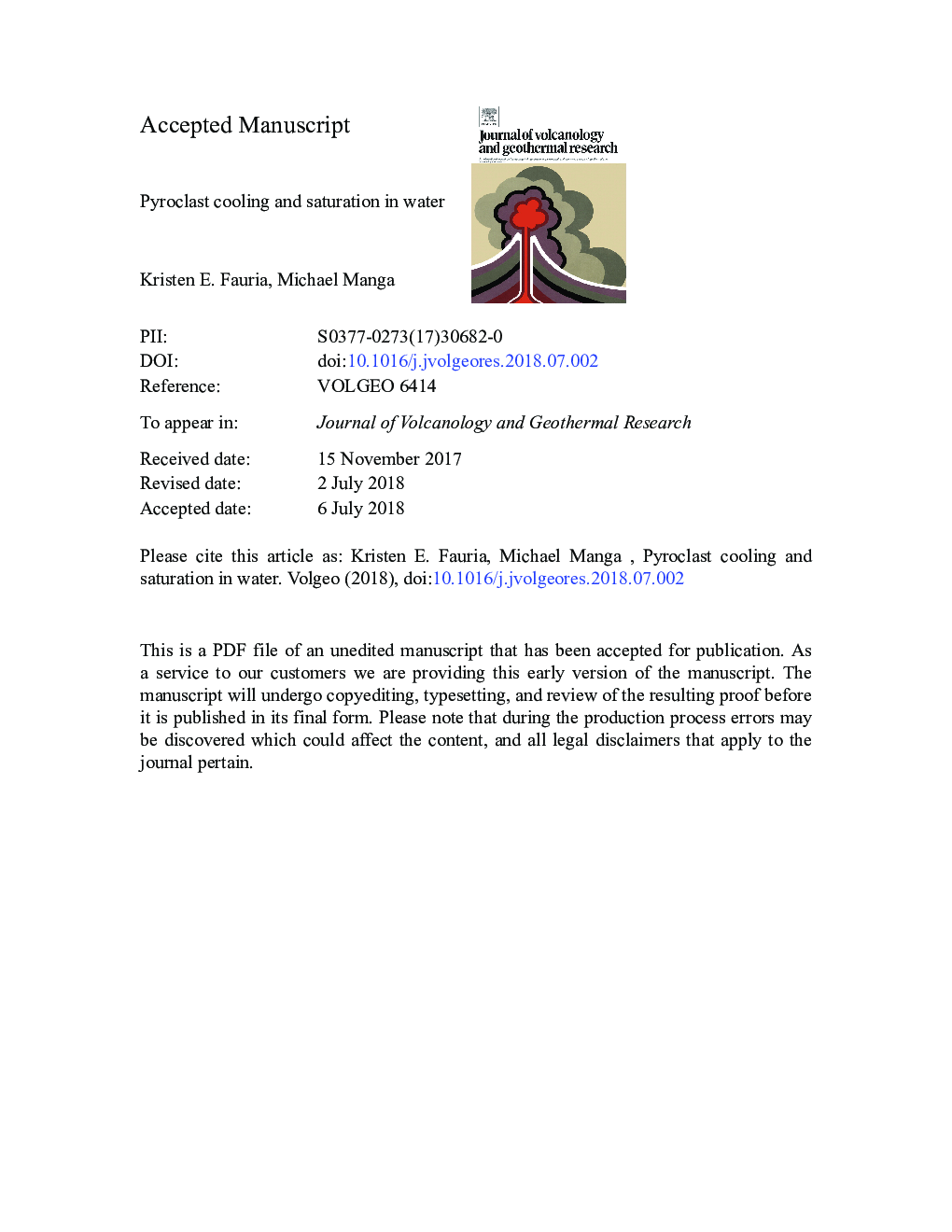| کد مقاله | کد نشریه | سال انتشار | مقاله انگلیسی | نسخه تمام متن |
|---|---|---|---|---|
| 8966180 | 1646782 | 2018 | 67 صفحه PDF | دانلود رایگان |
عنوان انگلیسی مقاله ISI
Pyroclast cooling and saturation in water
دانلود مقاله + سفارش ترجمه
دانلود مقاله ISI انگلیسی
رایگان برای ایرانیان
کلمات کلیدی
موضوعات مرتبط
مهندسی و علوم پایه
علوم زمین و سیارات
ژئوشیمی و پترولوژی
پیش نمایش صفحه اول مقاله

چکیده انگلیسی
In the submarine setting pyroclast cooling and saturation, by controlling the buoyancy of individual clasts and surrounding fluid, exert fundamental controls on the dispersal and fate of volcanic material. In this study we use laboratory experiments to understand and quantify how hot and air-filled pyroclasts cool and saturate in liquid water. By measuring internal temperature and clast submerged weight in over thirty experiments, we find that pumice cools and saturates in two stages. We observe that the first stage is marked by much higher rates of cooling and saturation than the second stage and that the transition between stages is sharp. We propose conceptual and quantitative models for each stage of pyroclast cooling and saturation. Specifically we argue that the first stage is defined by the presence of internal steam. That is, hot pyroclasts ingest liquid water and generate steam. Once a clast's internal pore space is filled with steam, heat loss to the surroundings causes condensation of internal vapor and clast saturation. Stage 1 ends when all internal steam has condensed. We test this idea with a Stefan Model with advection and conclude that heat loss, rather than permeability, controls the saturation of pyroclasts above the boiling temperature. We find that permeability matters for air-filled clasts with initial temperatures below the boiling point. Stage 2 begins after all internal vapor has condensed and we propose that stage 2 cooling and saturation are controlled by heat conduction and thermal contraction of trapped gas, respectively. From our understanding of the processes that govern the stage 1 to 2 transition, we derive an empirical average pyroclast cooling rate of qâ¯=â¯7.5 ± 0.5 W cmâ2. Finally, we develop quantitative models for cooling-controlled porous clast saturation and for buoyant clast rise to the ocean surface. We find that meter size clasts stay buoyant for more than 10â¯min - long enough to reach the surface from a depth of 1000â¯m. The models developed here test our understanding of clast-scale processes and demonstrate that - in hot and porous clasts - the details of internal texture do not matter because clast saturation, and thus buoyancy and fate in the water column, are governed by heat transfer.
ناشر
Database: Elsevier - ScienceDirect (ساینس دایرکت)
Journal: Journal of Volcanology and Geothermal Research - Volume 362, 15 August 2018, Pages 17-31
Journal: Journal of Volcanology and Geothermal Research - Volume 362, 15 August 2018, Pages 17-31
نویسندگان
Kristen E. Fauria, Michael Manga,